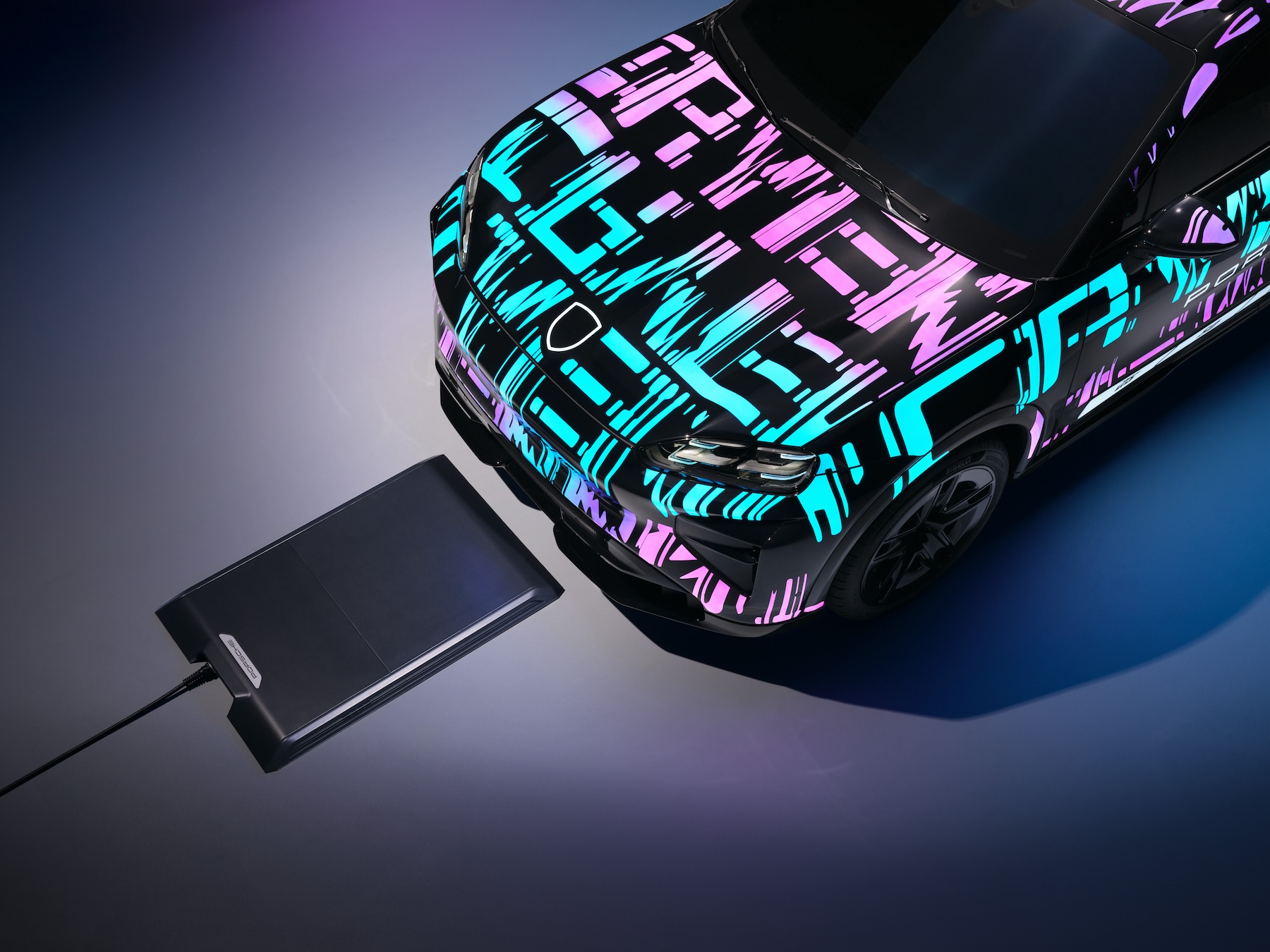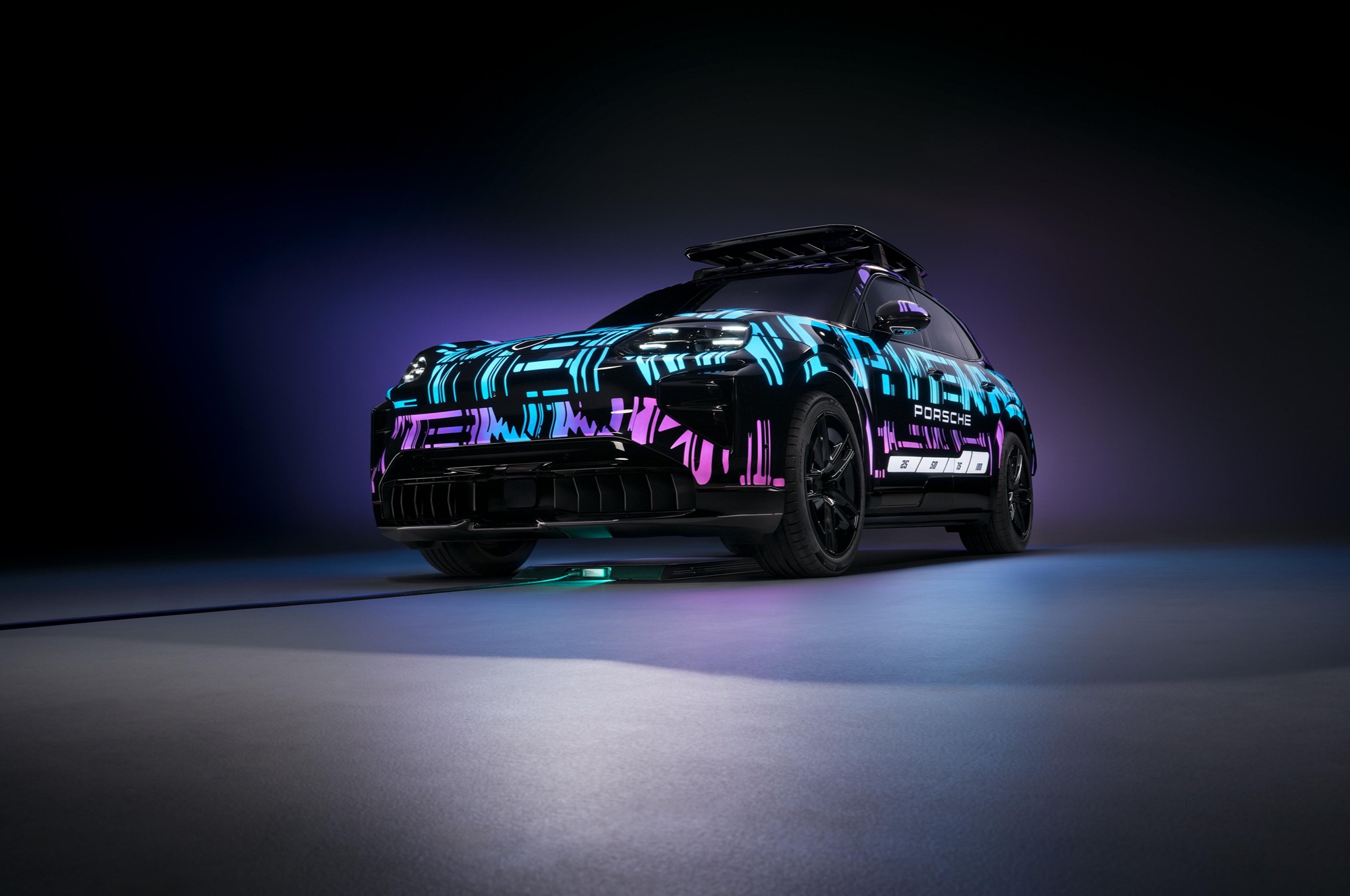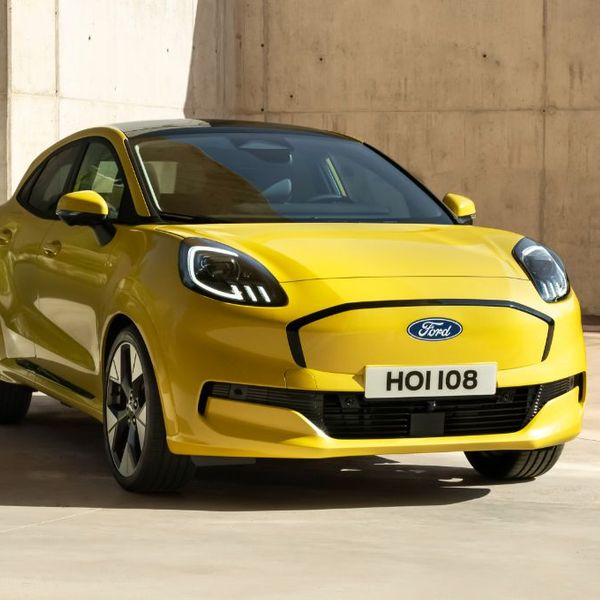You can charge your phone wirelessly, your toothbrush can juice up while you sleep, you can even cook your dinner on an induction hob that transmits heat effortlessly using the same technology. So why not your car? Shouldn’t be that hard, right?
It’s a simple enough idea, but the execution has needed some clever engineering brains to get together to make it safe and reliable. It’s also needed a bit of money throwing at it, and there’s plenty of that at Porsche HQ – this is a car company that spent £2.2bn on research and development in 2024.
And when the new Cayenne Electric (you can read our drive of the prototype version here) arrives in 2026, Porsche will offer wireless induction charging as an option on the premium SUV – no price details yet, but think around £5,000 – and it has just revealed some more details about the new setup.

So how will wireless charging work on the new Cayenne?
If you’ve ticked the right option box on your order form, the new Cayenne Electric will come fitted with a wireless charging mechanism just by the front axle. Porsche will supply a plate that sits on the floor that’s 60mm tall, 780mm wide and 1,170mm long, plenty short and narrow enough to sit below the car between the wheels.
Just like charging your phone or any other wireless charging enabled device, you line your car over a plate on the floor and it charges up your battery at an impressive 11kW with 90% efficiency says Porsche. Simple enough for the driver, but there’s plenty of complicated tech that’s gone into making it happen.
How do you get it started?
You don’t have to press any buttons, but in the first instance the plate itself has to speak to the car so that it knows whether it’s allowed to charge or not – sensible security measure that, so no one can steal your electricity. A wireless module built into the charging plate exchanges details with the car – you’ll already have paired the two and set a password when getting it all installed.
The Cayenne then uses the parking cameras to help you align the car properly with the plate, using the same type of sensors that detect whether your key is in range of the car or not. A guide on the camera screen will help you to position your Cayenne just so.

Will it be safe?
There’s a lot happening inside the plate – it’ll convert your domestic AC supply to DC electricity and then change it back to AC voltage. But where your house plugs are 50Hz and 230V, the Porsche plate changes that to 85kHz and 2,000V.
This just goes to show how much electricity you need to make it jump 150mm or so through the air – and the system has been designed to allow for 100mm of leeway if the car isn’t quite aligned.
Safety is key though, and the charging mechanism inside the car has been shrouded in protective cladding to stop any magnetic forces from affecting any other part of the car, and there are sensors that look for any foreign objects that could cause an issue.
This takes us back to your induction cooker, which uses the same tech not to charge, but to heat your dinner. If any metal got between the plate and the car while it was charging, it would heat up instantly, but the system is designed to cut out if it detects any metal. Likewise motion sensors are constantly vigilant to ensure that nothing gets onto the plate while it’s charging.

Can I use it on my car?
The Porsche Cayenne will be the first production electric car to come with wireless electric charging capability and the Porsche pad will just be compatible with the Cayenne, though companies like WiTricity have developed aftermarket wireless charging setups that are currently aimed at fleet operators.
The Volkswagen Group is looking to roll out the technology across its other brands after Porsche has debuted the new feature on the Cayenne, and other carmakers like Stellantis, Geely (likely via its Volvo and Lotus brands) and Toyota are working on their own wireless tech. Tesla spent nearly £60m snapping up a German start-up in 2023 that was working on wireless charging for EVs.
Who else might introduce wireless charging?
These current applications look at static charging, so all you’d really be cutting out is the need to plug your car in at home. The really fun application of the technology is on the move.
French motorway operator Vinci Autoroute is currently doing a trial on the A10 motorway near Paris, using a 1.5km stretch of motorway to trial wireless electric charging in HGVs, which is seen as an important tool for decarbonising freight transport, while similar projects are also happening in the USA and Sweden.
So we worry about plugging in our electric cars to charge, but your next EV – or perhaps the one after that – might not need you to plug it in at all.
 French motorway operator Vinci is conducting a wireless charging trial on the A10 near Paris
French motorway operator Vinci is conducting a wireless charging trial on the A10 near Paris 









